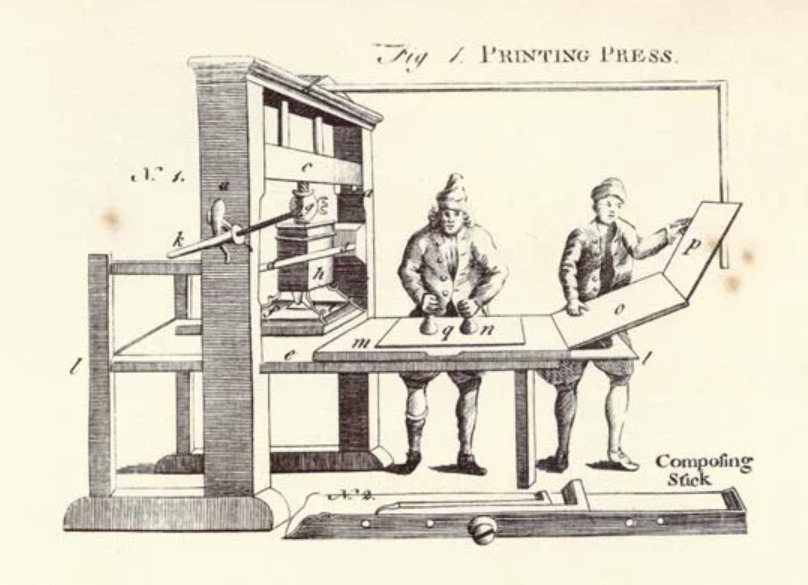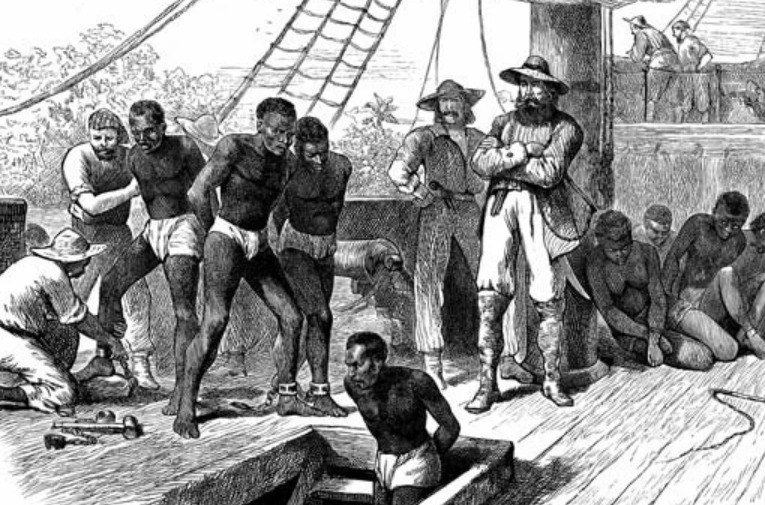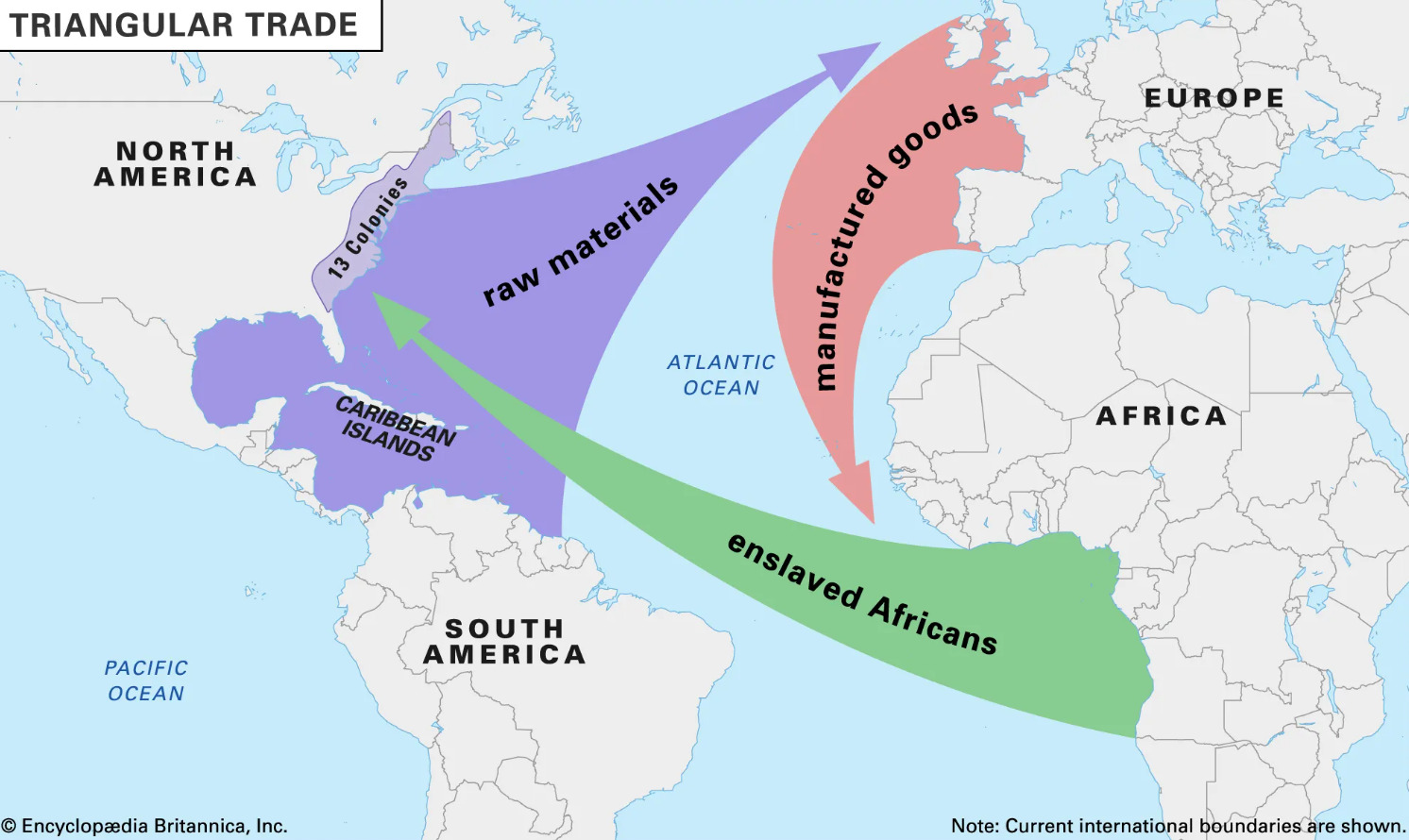"The Interesting Narrative of the Life of Olaudah Equiano"
The Significance of The Interesting Narrative of the Life of Olaudah Equiano
My focus for the early modern period is Equiano's narrative, The Interesting Narrative of the Life of Olaudah Equiano. It was published in 1789, and Equiano was his own publisher. Also, British abolitionists, such as Hannah More, Josiah Wedgwood, and John Wesley, helped him publish his book. They helped collect evidence on the harsh treatment slaves went through and more (Luebering). The narrative is about his experiences as a former African slave. It is significant because it was a pivotal text in the abolitionist movement. It highlighted the harsh and cruel treatment of the transatlantic slave trade. It also challenged other ideas that people had, such as racist ideas and more. It contributed to the bigger belief in human rights and equality.
Printing Method and Production
The narrative was printed using hand letterpress. This method was made by Johannes Gutenberg in the mid-15th century. This invention revolutionized book production. His book was manually written by scribes using this tool. Regarding the use of the tool, one arranges individual metal-type characters, punctuation markers, and spaces in a composing stick to form lines of text. It requires skills and accuracy to ensure they have the correct formatting. Then it was transferred to a frame, also known as a chase, and tightly secured to ensure it stayed in place during printing. The ink was applied to the surface, either by ink balls or rollers. Then the inked type was pressed against the paper using this tool. Repeat this process until you finish. Lastly, the pages needed to dry, and be adjusted for the final product. It is labor-intensive but can create numerous books (Lehmann-Haupt).
Equiano’s Strategies and Influence
In the source, “Colonialism, Biblical World-Making, and Temporalities in Olaudah Equiano’s Interesting Narrative,” Johnson explores how Equiano strategically challenged colonial efforts and Christian narratives, to abolish slavery (Johnson 1011). Equiano lived in London and had to be discreet about his true motives. It is because it was published at a time when people and laws supported colonial and slavery efforts. Also, he was a slave, so he had to be more careful. There would have been more and worse punishments if he was caught. So, he framed his argument in the context of human rights and Christianity to gain support from his readers. He framed it in terms of human rights, arguing that everyone deserves equal rights (morally and ethically correct.) He framed it in Christianity to further appeal to the moral aspects in his reader's minds. Christianity is all about equality and justice, therefore making slavery look terrible. This strategy successfully influenced public opinion and gained support for abolition. The success is also seen with its nine editions and transition to a single volume to reach more people (Johnson 1003). His narrative played a crucial role in shaping public opinion and fostering political activism in the late 18th century (Johnson 1023).
Equiano’s Book Tour and Public Engagement
There are many ways Equiano spread his book. One way Equiano spread his ideas of ending slavery was through book tours. According to “The Other Interesting Narrative: Olaudah Equiano’s Public Book Tour,” Equiano's book tour from 1789 to 1794 was a huge accomplishment in British history. It was the first modern-style author tour (Bugg 1424). He signed and sold copies at different places, which wasn't common during this time. Also, since it was in person, he could engage with the working-class communities to get their support. The source cites that this was an effective tactic because his book became one of the best-selling in the early 1790s (Bugg 1428).
Another way it reached many people was through advertisements and public and private correspondence, further helping his narrative to go global (Bugg 1426).
Equiano’s Impact
The technology and printed press helped spread Equiano’s narrative globally. It significantly impacted the print culture and book history of his time. He reached many people and helped spread political activism. His autobiography played a significant role in shaping print culture.
The print culture during this time helped advance many causes, such as political and social. As seen with Equiano, his abolitionist literature played a crucial role. It helped the movement by showing many of the horrors of slavery and advocating for its abolition.
Also, this widespread publication and translation highlight the growing influence of print culture during this time. Equiano's narrative was able to reach many, which was something that was not possible before.



